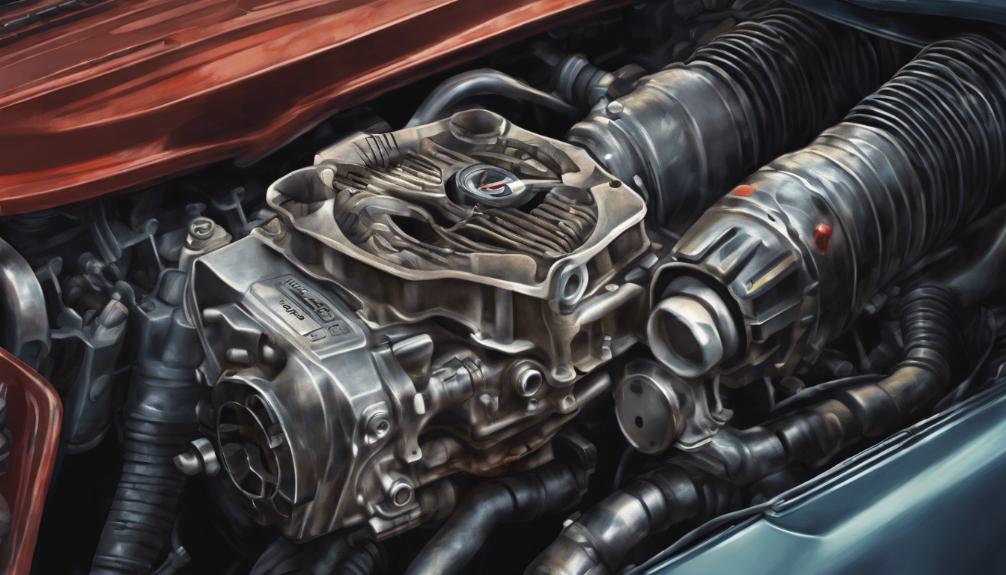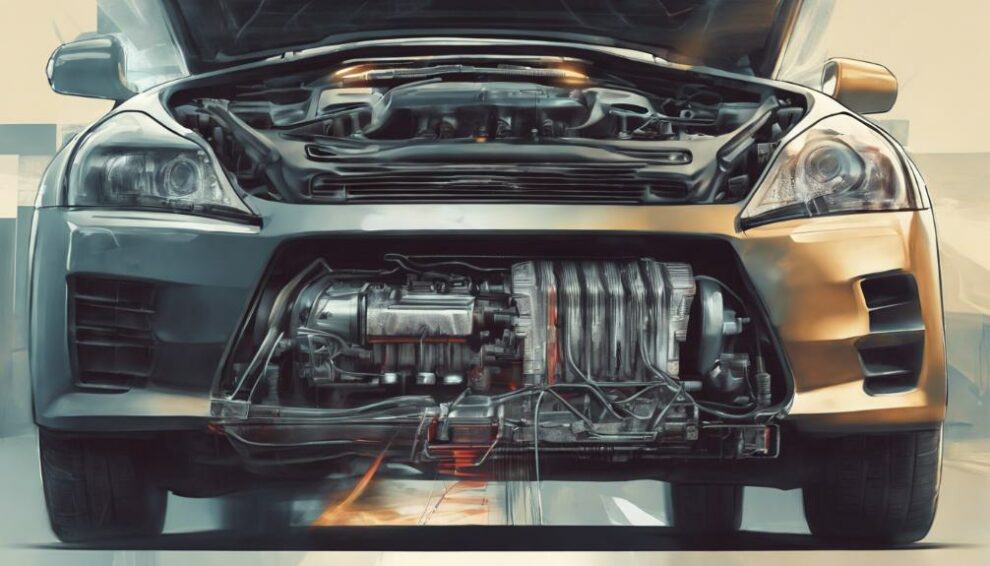If you encounter a P0173 code pointing to a fuel trim issue in Bank 2, it indicates an important problem affecting your vehicle’s fuel mixture regulation.
Possible causes include a faulty MAF sensor, dirty injectors, vacuum leaks, or malfunctioning O2 sensors. Symptoms can range from poor fuel efficiency to start-up troubles.
To diagnose, inspect Bank 2, test fuel trim, analyze sensor data, and check air-fuel adjustments. Avoid common mistakes like replacing parts without testing.
Repairs may involve replacing the MAF sensor, fixing intake leaks, and ensuring proper air-fuel mixture. Understanding these aspects is crucial in resolving performance-related concerns.
What You Need to Know
- P0173 code indicates a fuel trim malfunction in Bank 2 of the engine.
- Bank 2 refers to the side of the engine where cylinder 2 is located.
- The issue may stem from a faulty MAF sensor, vacuum leaks, or injector problems.
- Symptoms include poor fuel efficiency, start-up issues, and illuminated MIL.
- Diagnosis involves testing fuel trim, oxygen sensors, and checking for vacuum leaks in Bank 2.
Causes of P0173 Code

If you’re experiencing the P0173 code, various factors like a faulty MAF sensor, dirty injectors, vacuum leaks, and malfunctioning O2 sensors could be the culprits.
To diagnose potential fuel injector issues triggering the P0173 code, fuel injector diagnostics are essential.
Professional in-car fuel injector cleaning systems can effectively address problems related to dirty or faulty injectors, ensuring peak engine performance.
Also, conducting air intake inspections is vital to pinpoint any vacuum leaks or manifold air leaks that might be contributing to the code.
Identifying the specific cause of the P0173 code is paramount in resolving the fuel trim malfunction in Bank 2.
By understanding and addressing these root causes promptly, you can prevent further damage to your vehicle and ensure that the engine runs smoothly.
Proper maintenance and timely inspections can go a long way in keeping your vehicle in top condition and preventing recurring issues related to the P0173 code.
Symptoms of P0173 Code
When experiencing the P0173 code, you may notice the Malfunction Indicator Lamp (MIL) illuminating as one of the symptoms. This warning light is an indicator that there’s a fuel trim malfunction in bank 2 of your vehicle’s engine.
Other symptoms that may arise due to the P0173 code include:
- Start up issues can occur, where your vehicle may have difficulty starting or may stall shortly after starting.
- Poor fuel efficiency is a common symptom associated with the P0173 code, leading to decreased miles per gallon.
- Black smoke from the tailpipe can be observed when the P0173 code is active, indicating a rich fuel mixture.
- Hesitation or misfire at idle or under load may occur, affecting the overall performance of the vehicle.
- You may experience issues with acceleration, as the engine may struggle to deliver power efficiently.
If you notice any of these symptoms, it’s essential to address the P0173 code promptly to prevent further damage to your vehicle.
Diagnostic Process for P0173 Code

Begin by inspecting Bank 2 of the engine to diagnose the P0173 code accurately. Start by testing the fuel trim in Bank 2 to determine if there are lean or rich conditions present.
Utilize diagnostic tools to analyze data from oxygen sensors, fuel injectors, and the mass airflow sensor specifically in Bank 2.
Look closely at the air-fuel ratio adjustments in Bank 2 to understand the root cause of the fuel trim malfunction.
Troubleshooting tips include checking for vacuum leaks, inspecting the fuel pressure, and ensuring there are no exhaust system leaks in Bank 2.
Verify that the oxygen sensors are functioning correctly and that there are no issues with the fuel injectors delivering the right amount of fuel.
Common Mistakes in P0173 Code Diagnosis
Failing to conduct thorough testing before replacing the mass airflow sensor can lead to misdiagnosis when dealing with the P0173 trouble code. Common misconceptions and troubleshooting tips include:
- Common Mistake: Replacing the mass airflow sensor without proper testing can lead to misdiagnosis.
- Neglected Check: Neglecting to check for vacuum leaks is a common oversight in diagnosing the P0173 trouble code.
- Wiring Faults: Overlooking potential wiring faults in fuel injectors can hinder accurate diagnosis of the issue.
- Scan Tool Use: Not using a scan tool to identify fuel trim range can result in incomplete diagnosis of the P0173 trouble code.
- Root Cause: Addressing the root cause of the problem is essential to avoid recurring issues with the P0173 trouble code.
To avoid missteps, conduct thorough testing, including checking for vacuum leaks, inspecting wiring, using a scan tool, and addressing the underlying issue.
By following these troubleshooting tips, you can accurately diagnose and resolve the P0173 trouble code.
Repairs for P0173 Code

To address the P0173 trouble code effectively, consider replacing the mass air flow sensor if found faulty or dirty.
The mass air flow sensor plays an important role in measuring the amount of air entering the engine, allowing the engine control unit to adjust the air-fuel mixture accurately.
If the sensor is malfunctioning, it can lead to a lean air-fuel mixture, triggering the P0173 code. Also, addressing intake manifold leaks is vital in resolving the P0173 code.
Inspect the intake manifold carefully for any signs of leaks or cracks that could result in unmetered air entering the system, causing a lean condition.
As an Amazon Associate we earn from qualifying purchases.










